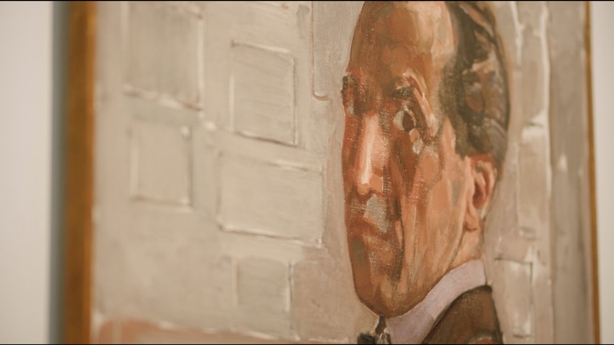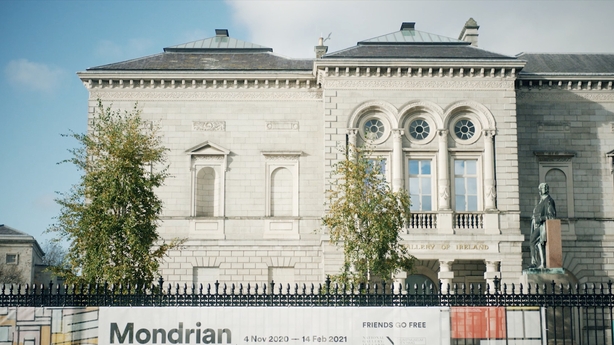Sean Rainbird, Director, National Gallery of Ireland, writes for Culture on RTÉ about the new exhibition of Mondarian paintings at the NGI
A quarter century ago, I borrowed a small naturalistic landscape for a display, the only loan to hang alongside six Mondrian paintings owned by the Tate. It showed in close-up four tree trunks in a field beside a stream and came from Derek Hill's collection. The only Mondrian, I believe, in a collection in this country. Now there are fifty at the National Gallery of Ireland, the first time a comprehensive Mondrian exhibition surveying his career has ever been presented on this island.
His art has become part of the modernist canon. Mondrian the painter, though, has not been best served by the age of mechanical reproduction. His now iconic grid paintings from the 1920s onwards, look great on posters; graphic designers have tried all kinds of things, like super-imposing city grids onto them. They have migrated into the world of design - think of the 1965 Yves Saint Laurent Mondrian Collection with six dresses based on the Dutchman’s paintings.

But these versions ignore the subtlety and surfaces of the originals. Partly this is about the myths surrounding the artist. On the one hand, there is the priest-like ascetic who in seclusion expands the dry geometric world created in his painting to decorate his studios. Perhaps this myth is of the artist who, 'creates a diagrammatic world which is the geometric equivalent for the seen landscape’, as described by Barnett Newman.
On the other hand, is the artist who loved jazz, theorised about its open form and the impact this had on painting, and who threatened not to return to the Netherlands in the mid-1920s if jazz was banned. Yes, the same artist inspired by boogie-woogie at the end of his life to create two of his most celebrated works. Another of the great American Abstract Expressionists, Mark Rothko, said, ‘to my way of thinking Mondrian was one of the greatest sensualists who ever lived’.
Naturally, Mondrian spans both interpretations. Rothko, though, points out why we should look beyond the explosion of Mondrian merchandise (his copyright lapsed in 2014) to take a really close look at the paintings themselves.

‘I have always told my students,’ he said, ‘that Mondrian was capable of constant caressing attention to a white surface and that with certain paintings he could continue this process for a whole year.’ Mondrian wrote about art, his in particular. But it was a framework for thinking on the canvas, not a strait jacket limiting his exploration of the medium. Look carefully at how carefully he brushes paint onto his canvases - the early ones as much as the late ones. It is often organised and orderly, but never sterile or simply in-filling.
He was a colourist from the very beginning, finding faded pinks in dusk scenes and building facades, and soft greys in the gloomy mists and early grids. Cubism was the bridge towards a pure abstraction beyond what is observed. Even here, look carefully at how the lines and planes, white, grey or coloured, expand or contract, adjust or settle into their place. This vibrancy of colour, balancing of contrasting elements, with brushwork as an expression of thinking-while-creating, makes the arrival of 50 Mondrian paintings in Ireland a rare and special pleasure. Seeing them up close is the way to unlock them for yourself.
But in these pandemic times, make sure to book your slot online first….

